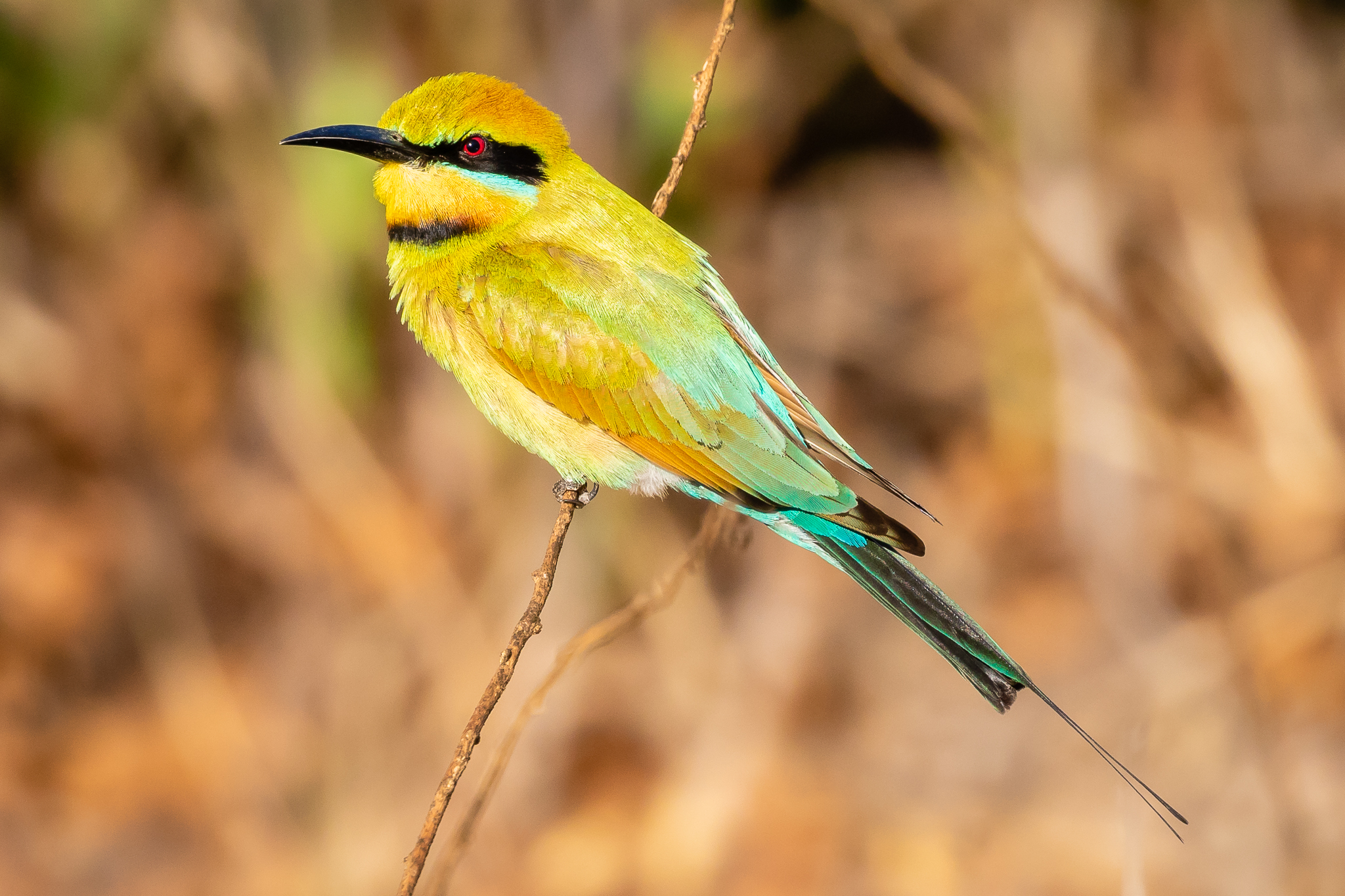Darwin NT
Darwin is home to many spectacular tropical birds.The best time to visit is the dry season between July and November. The George Brown Botanic Gardens and East Point Mangroves, and further away Fogg Dam, are all excellent places to see birds. Darwin is central for travel to Kakadu, Katherine and the Kimberley.
Photo: This Rainbow Bee-eater was photographed at East Point in Darwin, hunting for insects (they do eat bees!) catching them in the air then returning to its perch.
This Comb-crested Jacana was photographed at Fogg Dam, walking across lily-pads feeding on insects and vegetable matter.
Forest Kingfishers live across the north and north-east of Australia. They are found in open forest as well as around watercourses. They feed on beetles, bugs and spiders, larvae and small lizards and frogs.
This Double-barred Finch was photographed on Darwin’s Esplanade, though normally they prefer grassy woodlands and farmlands. Double-barred Finches eat seeds from the ground and sometimes insects.
Rose-crowned Fruit-Doves inhabit the north and east of Australia, in coastal tropical and sub-tropical forest. They feed on ripe fruit, figs and Camphor Laurel.
The Red-headed Honeyeater is found in northern Australia, Indonesia and Papua-New Guinea. It feeds on nectar and insects.
The Wandering Whistling-Duck is a bird of the waterlands, this line up was photographed at Fogg Dam
The Spangled Drongo is a common bird of the north. Here seen at George Brown Botanic Gardens in Darwin, it shows off its iridescent colouring. Spangled Drongos feed on insects and small vertebrates.







